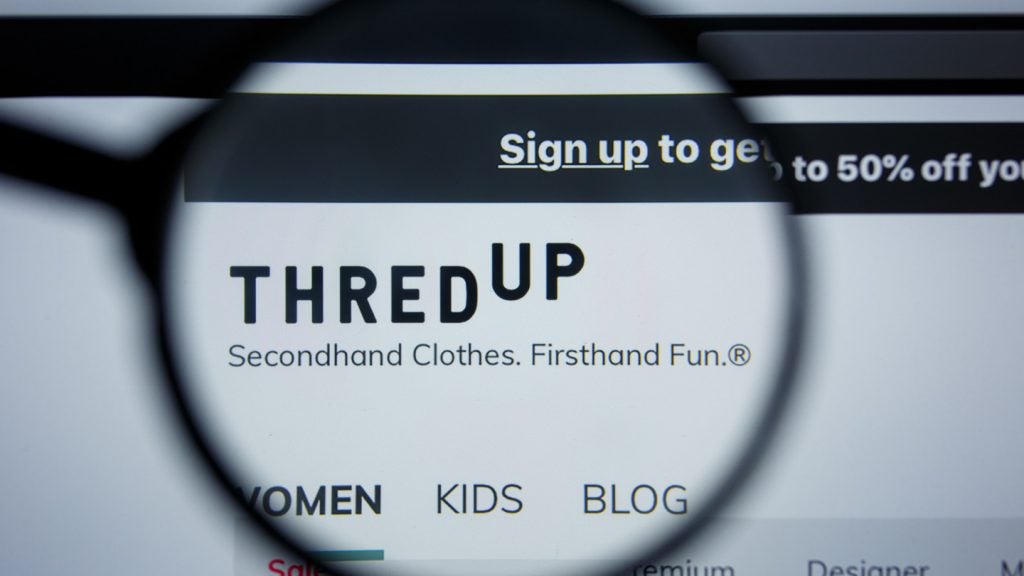US online thrift store ThredUp reported a quarterly revenue of $82m for its third quarter 2023, representing an increase of 21% year over year. The resale platform also achieved quarterly adjusted EBITDA breakeven and free cash flow for the first time in its history.
ThredUp benefits from resale market boom
Gross profits increased by 27% year over year, totalling $56.6m. ThredUp’s chief financial officer Sean Sobers characterised this growth metric as the “best indicator” of the company’s underlying growth in light of changes in revenue accounting.
Gross margin also increased from 65.5% in Q3 2022 to 69% in Q3 2023. US gross margins stood at 78.5% – which was attributed to the company’s shift from a resale-as-a-service (RaaS) business model to consignment in the US.
ThredUp said that it also plans to transition its European business from RaaS to consignment-based, giving it more “levers” to manage gross margins.
The resale platform’s active buyers and total orders have also been growing: 1.8 million orders were placed in Q3 2023 compared to 1.79 million orders in Q2 and 1.51m orders in Q1.
The company says that it achieved this growth with a 4% increase in expenses across operations, product and technology. It has expanded its artificial intelligence deployment across its distribution centre network and product experience.
ThredUp’s performance also echoes a wider boom in the global resale market, as other resalers such as Vinted and Depop report growing revenues.
Vinted recently announced strong revenue growth of 51% in 2022, bringing in €370.2m ($401.7m) compared to 2021’s €245.1m. Depop’s recently filed accounts for 2022 also revealed that revenue rose 8% year-over-year to £54.3m, while losses narrowed from £84.5m in 2021 to £59.4m.
Gen Z - driving the shift to pre-loved
Thomas S. Robertson, professor of marketing at the Wharton School and an expert in retail strategy, wrote in the Harvard Business Review that historically, brands were apprehensive that consumers might “trade down”, opting for pre-owned rather than new goods.
“What should really worry companies is this: If they don’t sell their own used products, someone else will,” he added.
The biggest driver of this shift to resale? Gen Z. This demographic group, he believes, are “trailblazers” and are “powerfully motivated by the idea of sustainability”.
“In many respects, they are the ones who have fuelled the explosive growth of the resale market, in part by rejecting the long-standing stigma associated with buying second-hand items,” Robertson said. “Clothing is a powerful and visible means of displaying status, and what we’re now seeing among Gen Zs is a kind of reverse conspicuous consumption, in which they convey status by showing themselves to be 'good thrifters'.”
Our signals coverage is powered by GlobalData’s Thematic Engine, which tags millions of data items across six alternative datasets — patents, jobs, deals, company filings, social media mentions and news — to themes, sectors and companies. These signals enhance our predictive capabilities, helping us to identify the most disruptive threats across each of the sectors we cover and the companies best placed to succeed.















